It seems you can't talk about pirates without hearing about boarding axes. This section looks at the boarding axe and its cousins. A boarding axe was pretty much your standard long handle axe. It was used primarily in cutting lines and knocking down cabin doors. It was as much a tool as a weapon..
For example when being boarded, grappling hooks with lines would be tossed from ship to ship in order to pull the ships together. An axe was the most effective way to cut these lines and repel boarders. A cutlass could also be used but the blow from the axe would be more effective in many cases.
Once a ship was boarded, the axe was sometimes used as a weapon but an axe was not nearly as effective as a cutlass. The axe could be used to cut the mast or yards on a ship plus it was effective for breaking open hatches and cabin doors.
Boarding axes were sized somewhere between a hatchet or tomahawk and a the double bladed axe, typically they had a handle around two to three feet (60 -90 cm) long and a two pound (1 Kilo) iron and later steel head, sharpened on one side and flattened for smashing on the other. Contrary to the movies, they were not designed to be thrown.
Some people confuse the larger boarding axe with a tomahawk or throwing hatchet. The term "tomahawk" is a derivation of the Algonquian words "tamahak" or "tamahakan". The earliest definitions of these words (early 1600's) applied to stone-headed implements used as tools and weapons. Later it was applied to any striking weapons; wood clubs, stone-headed axes, metal trade hatchets, etc. As the years passed a tomahawk was thought of as any Indian-owned hatchet-type instrument. Later, Colonial Americans (traders, trappers, explorers) came to rely on the tomahawk as standard equipment. By the time of the American Revolution, Tomahawks had come into standard use among members of the Colonial Army and Militia as well as the Colonial Navy. Tomahawks are smaller in size and weight and could be thrown or used as a parrying weapon instead of a dagger. While not as good at cutting rigging or breaking down doors, they were easier to wield in close quarter combat.
Boarding Axe and Tomahawk
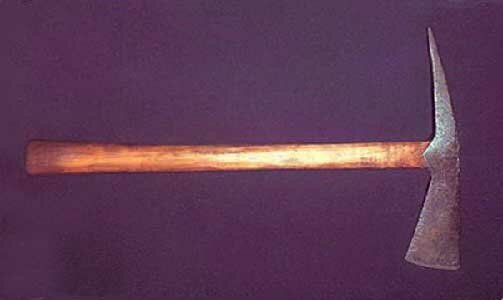
Boarding Axe, circa 1700s
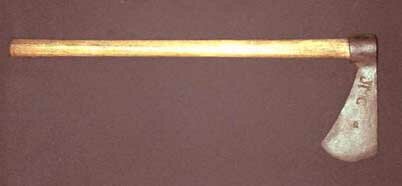
Boarding Axe circa 1600s
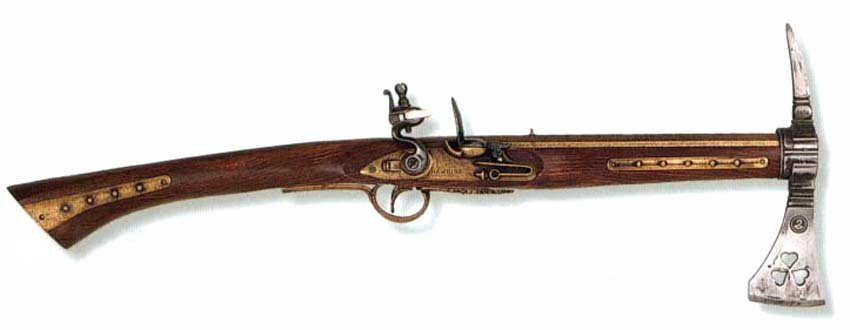
Combination pistol/hatchet, circa late 1600s (German Origin).
Common Colonial Period Tomahawks
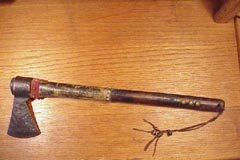
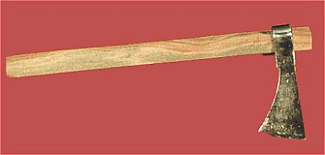
The first of Native American origin, the second a typical Trade Tomahawk made in Europe and traded with the Iriquois Nation.
The trade tomahawks found favour among Colonial Americans as well as Native Americans and is similar to the military issued tomahawks. Note the similarities to the boarding axe.

The only author and editor of all pages on the site. Most of what I write about is based on years of book reading on the topic. My first web page was published back in 1994.